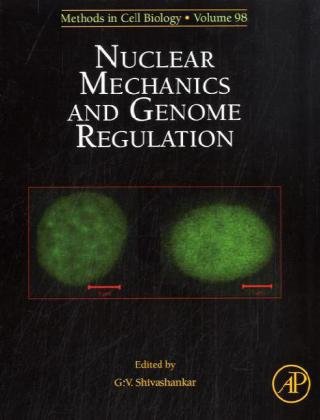

Most ebook files are in PDF format, so you can easily read them using various software such as Foxit Reader or directly on the Google Chrome browser.
Some ebook files are released by publishers in other formats such as .awz, .mobi, .epub, .fb2, etc. You may need to install specific software to read these formats on mobile/PC, such as Calibre.
Please read the tutorial at this link: https://ebookbell.com/faq
We offer FREE conversion to the popular formats you request; however, this may take some time. Therefore, right after payment, please email us, and we will try to provide the service as quickly as possible.
For some exceptional file formats or broken links (if any), please refrain from opening any disputes. Instead, email us first, and we will try to assist within a maximum of 6 hours.
EbookBell Team

0.0
0 reviews
ISBN 13: 9780123810106
Author: G V Shivashankar
In recent years new discoveries have made this an exciting and important field of research. This exhaustive volume presents comprehensive chapters and detailed background information for researchers working with in the field of nuclear mechanics and genome regulation.
Chapter 1. Fluorescence Fluctuation Microscopy to Reveal 3D Architecture and Functionin the Cell Nu
I. Introduction
II. Rationale
III. Materials and Methods
IV. Results and Discussion
V. Conclusions
References
Chapter 2. Studying Histone Modifications and Their Genomic Functions by EmployingChromatin Immunop
I. Introduction
II. Rationale
III. Chromatin Immunoprecipitation
IV. Immunoblotting and Coomassie Staining
V. Discussion
VI. Summary
References
Chapter 3. Dynamic Organization of Chromatin Assembly and Transcription Factoriesin Living Cells
I. Introduction
II. Chromatin Dynamics
III. Higher-Order Chromosome Compaction
IV. Nuclear Plasticity
V. Spatio-temporal Organization of Transcription Factories and Gene Loci
VI. Conclusions
References
Chapter 4. Manipulation and Isolation of Single Cells and Nuclei
I. Introduction
II. Techniques for Single-Cell Manipulation
III. Nuclear Isolation and Manipulation
IV. Discussion and Future Implications
References
Chapter 5. Beyond Lamins: Other Structural Components of the Nucleoskeleton
I. Introduction
II. Methods
III. Discussion and Prospects
References
Chapter 6. Altered Mechanical Properties of the Nucleus in Disease
I. Introduction
II. Rationale
III. Materials
IV. Methods
V. Results and Discussion
VI. Summary
References
Chapter 7. Theoretical Concepts and Models of Cellular Mechanosensing
I. Introduction
II. Macromolecular Components Involved in Cellular Mechanosensing
III. Cell Adhesion
IV. Active and Passive Mechanics of the Cytoskeleton
V. Slow Mechanical Processes in the Cytoskeleton
VI. Cellular Response to External Mechanical Stress
VII. Discussion
References
Section B. Impact of Nuclear Mechanics on Function
Chapter 8. Mechanical Induction of Gene Expression in Connective Tissue Cells
I. Introduction
II. Extracellular Matrix Environment
III. Mechanical Signaling
IV. Overview of Methods for Mechanical Cell Stimulation
V. Cardiac Fibrosis and Mechanical Induction of Gene Expression
VI. Conclusions
References
Chapter 9. Physical Plasticity of the Nucleus and its Manipulation
I. Introduction
II. Micropipette Aspiration
III. Molecular Mechanisms from Reengineered Nuclei
IV. Isolation of Individual Nuclei
V. Outlook
References
Chapter 10. Prestressed Nuclear Organization in Living Cells
I. Introduction
II. Mechanics of Isolated Nucleus
III. Nuclear Prestress in Cellular Context
IV. Conclusions
References
Chapter 11. Nanotopography/Mechanical Induction of Stem-Cell Differentiation
I. Introduction
II. Types of Topological Patterns
III. Stem Cell Reception to Substrate Topology
IV. Cell Shape: A Regulator of Biological Processes
V. Conclusions
References
Chapter 12. Mechanical Induction in Embryonic Development and Tumor Growth:Integrative Cues Through
I. Introduction
II. Genetic Control of Morphogenetic Movements: Underlying MolecularMechanisms and Evaluation of For
III. Mechanical Control of Gene Expression: Testing Mechanical Inductionby Application of Endogenous
IV. Mechanotransduction in the Control of Posttranslational MorphogeneticEvents: Mechanical Activati
V. Incidences of Mechanical Induction in Tumor Development
VI. Mechano-Genetics Network in Perspective of Evolution: Reactivationof a Primitive Feeding Respons
References
Chapter 13. Informatics-Based Analysis of Mechanosignaling in the Laminopathies
I. Introduction
II. Methods
III. Reagents and Equipment for Subjecting Cells to Uniaxial Strain
IV. Discussion
V. Summary
References
Chapter 14. Autosomal Dominant Leukodystrophy Caused by Lamin B1 Duplications:A Clinical and Molecu
I. Introduction
II. Leukodystrophies
III. Adult-Onset Autosomal Dominant Leukodystrophy
IV. Molecular Genetics of ADLD
V. Molecular Mechanisms of ADLD Duplication Events
VI. Molecular Mechanisms Underlying ADLD Disease Pathology
VII. Animal Models of Lamin B1 Mutations
VIII. Aging and ADLD
IX. ADLD and MS
X. Summary
nuclear mechanics and genome regulation
nuclear genome definition
nuclear genome composition
a genome
nuclear genome
Tags: G V Shivashankar, Mechanics, Genome